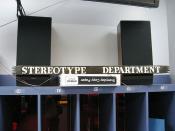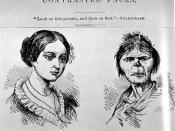Gender stereotypes and movies are two popular variables that have proposed a numerous
number of theories and arguments in the communication field. However, there is a considerable
lack of research on the possible, existing relationships between these two variables. This study,
therefore, attempts to verify the relationship between gender stereotypes and movies. It
investigates the existence, construction and importance of gender stereotypes in society life and
then moves on to establish going to the movies (movie attendance) as playing a major role in the
construction of gender stereotypes since the portrayal of both men and women on celluloid is
largely traditional and stereotypical, serving to promote a polarization of gender roles. Based on
the evidence gathered on the above premises, this study thus hypothesizes that these portrayals of
gender roles play an influential role, if not in the formation, but the reinforcements of these
gender stereotypes, which shape perceptions and behaviors of adolescents in particular, and of
individuals in general.
The key concepts in this study are therefore marked as gender stereotypes
and movies.
The construction of gender stereotypes is a subject that has been broadly discussed by
scholars. Hegstrom and McCarl-Nielsen described their study as a search for gender differences.
They investigated the extent to which language used to describe known persons are gendered by
performing "a content analysis on open-ended essays that contain the most frequently used
metaphors to determine whether or to what extent they contain gender stereotypes" (Hegstrom &
McCarl-Nielsen, 2002). The results showed a significant relationship between the sex of
the describers and the sex of the describees in the attribution of metaphor descriptions. A most
suitable example was the recurring metaphors relating to "sun" used to describe women,
indicating that women are thought to be more sociable than men (Hegstrom & McCarl-Nielsen,



Re: Your layout
A very good piece I thought, however it could be greatly improved by a proper layout.
2 out of 3 people found this comment useful.